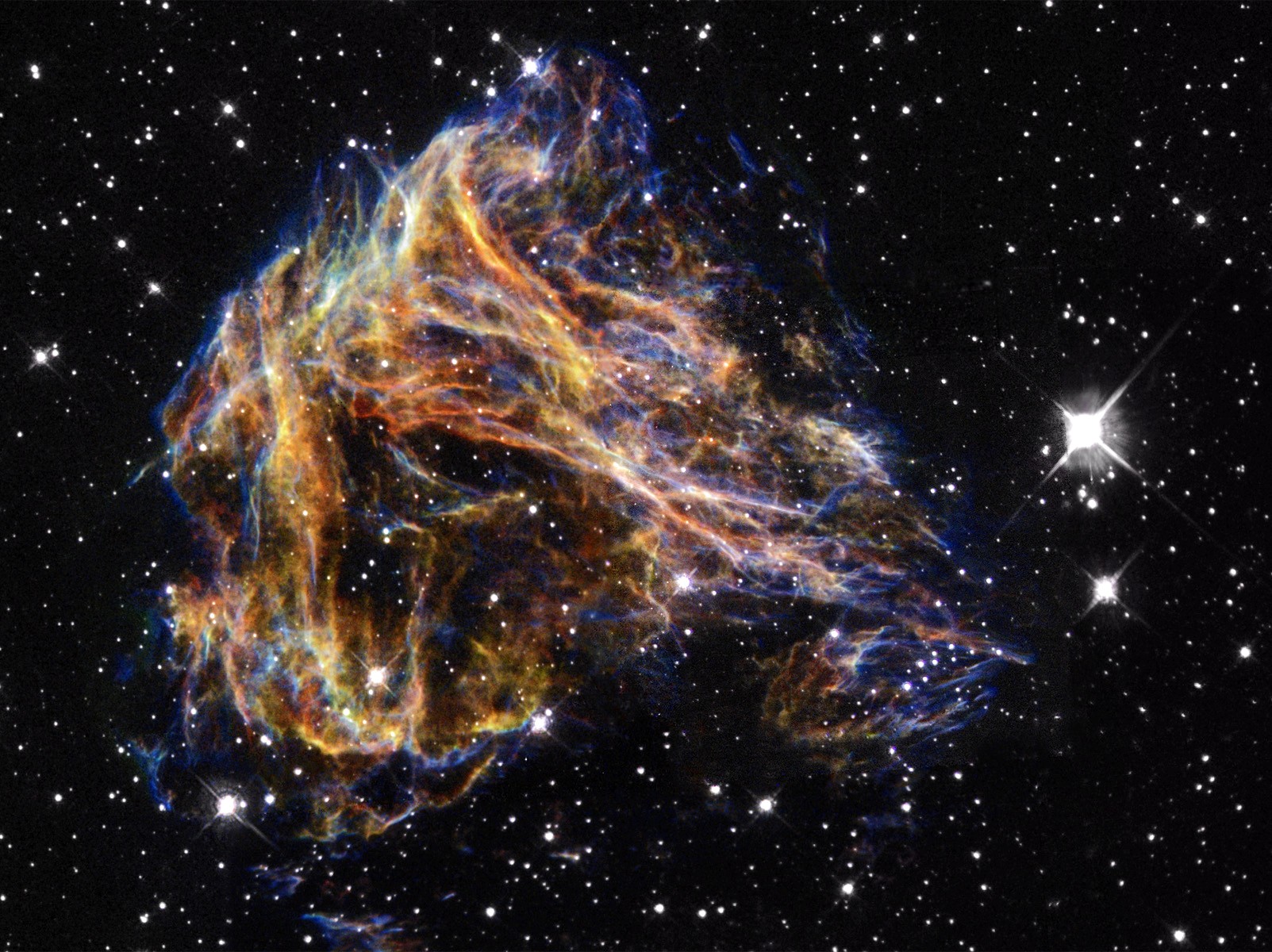Supernova remnant N49 in Large Magellanic Cloud
click the picture
It was just an instant ago by cosmic standards, but some hundreds of thousands of years have likely passed since the massive explosion of a supernova left behind these tracers of sulfur, hydrogen, and oxygen gases.
Deep within this cloud of gases is a neutron star — very likely the core of the original star — that is regularly emitting waves of gamma rays a million of times more powerful than photons. And yet, by neutron star standards, N49 is considered a “soft repeater”, whose gamma rays are less energetic than those emitted by the usual “bursters”.
This neutron star is spinning at the blinding speed of one revolution every eight seconds. Its magnetic field is about a quadrillion (a thousand times a trillion) times more powerful than that of the Earth, putting it in the rare category of “magnetar”.
![]()
